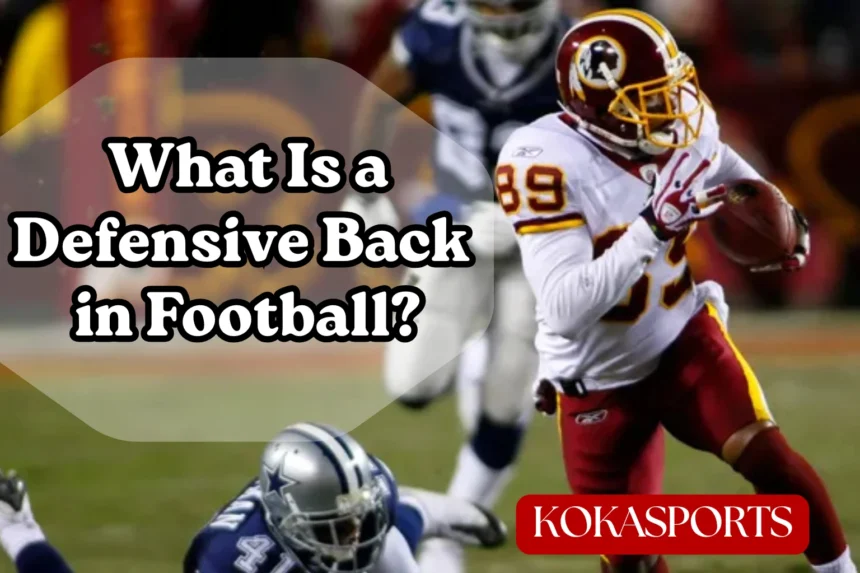What Is a Defensive Back In Football?
A defensive back is a player on the defensive side of the ball who protects against pass plays and helps stop the run game. The defensive back position in football is one of the most important jobs on any defensive team. These defensive players work as the last line of defense, standing behind the defensive line and linebackers.
In American football, a defensive back has many duties. They must tackle running backs, cover wide receivers, and help stop running plays. The defensive back’s job is to make sure no big plays happen. When you’re watching a game, you’ll usually see 4 defensive backs on the field during most plays. However, teams can use 5 defensive backs or even 6 defensive backs when they expect a pass play.
The difference between a defensive back and other defensive players is simple. While a defensive lineman fights at the line of scrimmage and a linebacker covers the middle area, a defensive back works in the backfield. They play behind the defensive line and must be ready to make a play anywhere on the field.
Read Also: Defensive Line Positions in Football: American Football Positions Explained
Types of Defensive Backs in American Football
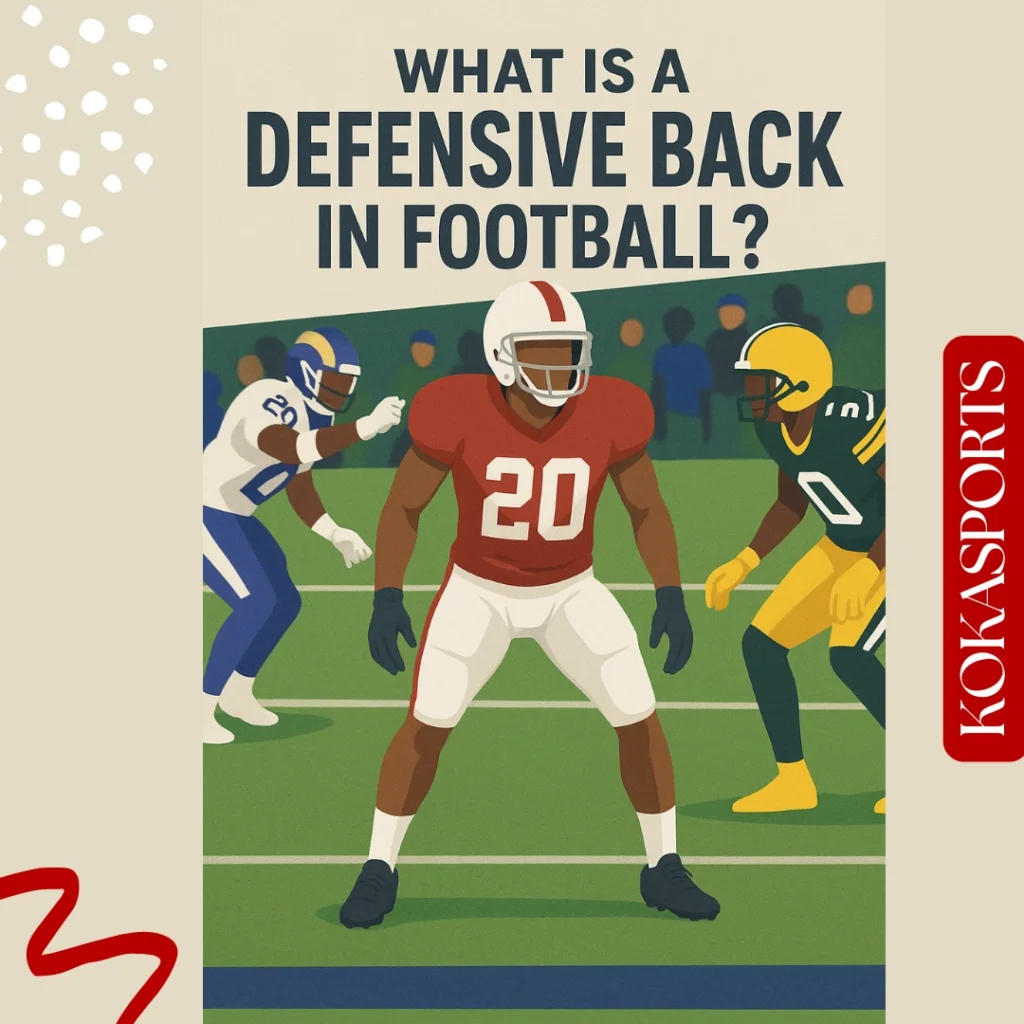
There are several types of defensive backs, and each has special jobs. The main position groups include cornerbacks and safeties. Let’s learn about football and understand what makes each defensive back position unique.
Cornerback: The Premier Defensive Back
A cornerback is responsible for covering wide receivers. They usually play close to the line of scrimmage or back on the field, depending on what the coach wants. Cornerbacks often play man to man coverage, which means they follow one receiver wherever he goes.
The cornerback position needs great ball skills and speed. These defensive backs play very close to wide receivers and must react quickly. A good cornerback can stop big passing plays and even get interceptions. In high school football and college football, cornerbacks are often the best athletes on the defensive side of the ball.
Key skills for cornerbacks include:
- Speed to keep up with fast wide receivers
- Ball skills to knock down or catch passes
- Footwork to change direction quickly
- Tackling ability to stop runners after catches
Safety: The Deep Defensive Back Coverage Specialist
A safety is a defensive back who usually plays deeper than cornerbacks. There are two main types: free safeties and strong safeties. Both play an important role in stopping both passing and running plays.
Free safeties work as the “center fielder” of the defense. They play in the middle of the field and help other defensive backs when needed. A free safety needs great vision to see the whole field and must communicate with other players.
Strong safeties work closer to the line of scrimmage than free safeties. They help tackle running backs and cover tight ends. Strong safeties must be tough enough to tackle big running backs but fast enough to cover receivers.
Essential Skills Every Defensive Back Must Master
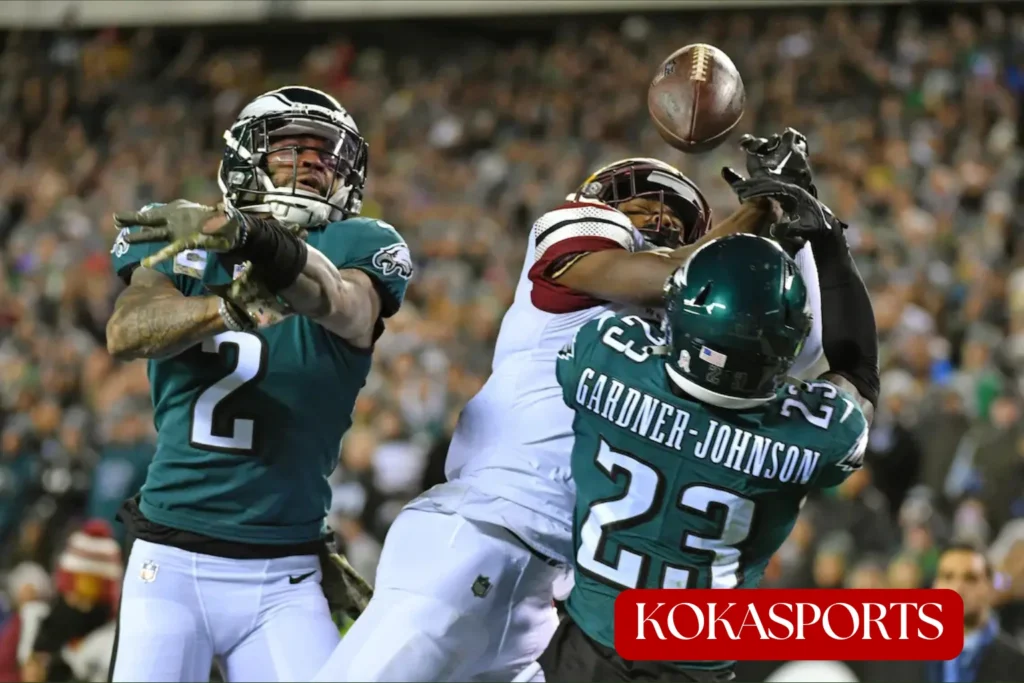
Playing defensive back requires a special combination of defensive skills. These defensive players need both physical and mental abilities to succeed at any level of football.
Physical Skills for the Defensive Back Position
Speed and agility are the most important physical tools for any defensive back. They must run with wide receivers and change direction quickly. A slow defensive back will get beaten by fast receivers on every play.
Tackling ability is crucial because defensive backs are often the last defenders between a runner and the end zone. They must tackle in open space, which is harder than tackling near the line of scrimmage. Good defensive backs use proper form and wrap up runners to prevent big gains.
Ball skills separate good defensive backs from great ones. The best defensive backs can catch the ball as well as many wide receivers. They practice catching drills every day and work on timing their jumps perfectly.
Mental Skills and Football IQ
Smart defensive backs have a high football IQ and understand what offenses are trying to do. They study film to learn how different quarterbacks and wide receivers like to run their routes. This helps them predict where the ball is going.
Communication is vital because defensive backs must work together. They call out routes, help each other with coverage, and make sure everyone knows their job. A good defensive back talks constantly during plays.
Reading the quarterback is an advanced skill that the best defensive backs master. They watch the quarterback’s eyes and body language to guess where he will throw the ball. This helps them get to the right spot to make a play.
How Defensive Backs Work in Different Formations
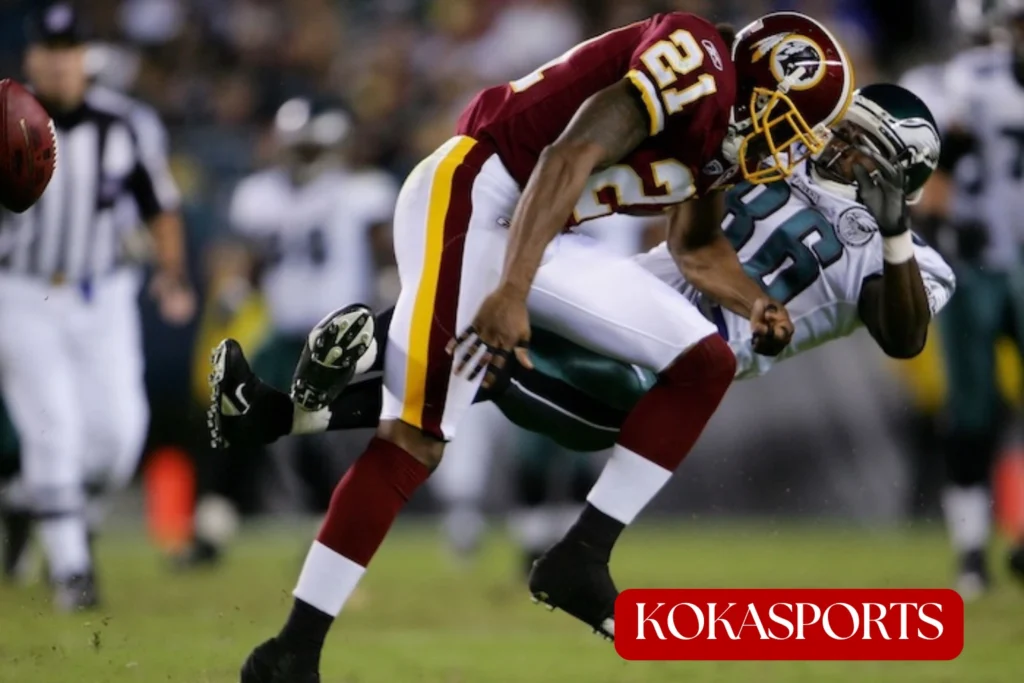
Teams use different numbers of defensive backs depending on the situation. Understanding these formations helps explain how the defensive back position works in football.
Base Defense Formation
In a base defense, teams typically use four defensive backs – two cornerbacks and two safeties. This balanced approach works well against both running and passing plays. The defensive coordinator chooses this when they’re not sure what the offense will do.
| Position | Number | Main Job |
|---|---|---|
| Cornerbacks | 2 | Cover wide receivers |
| Free Safety | 1 | Deep middle help |
| Strong Safety | 1 | Run support and coverage |
Nickel Defense (5 Defensive Backs)
When teams expect a pass play, they add an extra defensive back called a nickel corner. This 5th defensive back usually covers slot receivers or helps with zone coverage. The nickel package is very common in today’s NFL and college football.
Dime Defense (6 Defensive Backs)
In obvious passing situations, teams might use 6 defensive backs on the field. This formation sacrifices run defense for better pass coverage. The extra DB gives the defense more speed and coverage options.
Training and Development for Defensive Backs
Becoming a good defensive back takes years of practice and development. Players must work on many different skills to master this position.
Youth and High School Development
Young players who want to play defensive back should focus on basic skills first. A football coach at the youth level should teach proper tackling technique and basic coverage rules. Players need to learn how to play zone coverage before they try more advanced skills.
Speed training is important for all defensive backs. Young players should work on:
- Sprint drills to build top speed
- Agility ladders for quick feet
- Cone drills for direction changes
- Backpedal technique for coverage
College Football and Professional Preparation
College football programs have more time to develop defensive back skills. Players work with position coaches who specialize in teaching defensive backs. They learn advanced coverage techniques and study complex offensive systems.
The best defensive backs in college football often make it to the NFL. Professional scouts look for players who combine great physical skills with football intelligence. They want defensive players who can learn quickly and adapt to different offensive styles.
Famous Defensive Backs and Their Impact
Throughout football history, great defensive backs have changed how the position is played. These players showed what’s possible when someone masters the defensive back position in football.
Ed Reed was one of the best safeties ever to play in the NFL. He had amazing ball skills and could return interceptions for touchdowns. Reed showed how a free safety could take over games by making big plays.
Deion Sanders was a cornerback who could completely shut down one side of the field. Opposing teams would avoid throwing to receivers he was covering. Sanders proved that one great defensive back could change an entire defensive game plan.
These best defensive backs shared common traits:
- Exceptional speed and athleticism
- Great instincts for reading plays
- Ability to make clutch plays in big moments
- Leadership skills to help teammates
Modern Challenges for Defensive Backs
Today’s offensive systems create new challenges for defensive backs. Modern offenses use more receivers and run faster-paced attacks than ever before.
Spread offenses put more receivers on the field, which means defenses need more defensive backs to match up. Teams now regularly play with 5 defensive backs or more to handle all these receivers.
Mobile quarterbacks make it harder for defensive backs to do their jobs. When a quarterback can run, defensive backs must stay disciplined in their coverage longer. They can’t assume the play will end quickly like it would with a pocket passer.
RPO (Run-Pass Option) plays force defensive backs to make split-second decisions. They must read whether the play is a run or pass and react accordingly. This puts a lot of pressure on defensive backs to make the right choice.
The Future of the Defensive Back Position
The defensive back position continues to evolve as offenses get more creative. Teams now look for defensive backs who can play multiple positions and handle different responsibilities.
Hybrid players who can play both safety and linebacker roles are becoming more valuable. These players give defensive coordinators more flexibility in their game planning. They can match up against tight ends or help stop power running plays when needed.
Technology is helping defensive backs improve faster than ever. Virtual reality training lets them practice reading routes without getting tired. Advanced statistics help coaches identify which techniques work best in different situations.
The defensive back position in football will always be important because teams need players who can cover receivers and tackle in space. As long as offenses throw the ball, defenses will need skilled defensive backs to stop them.
Conclusion
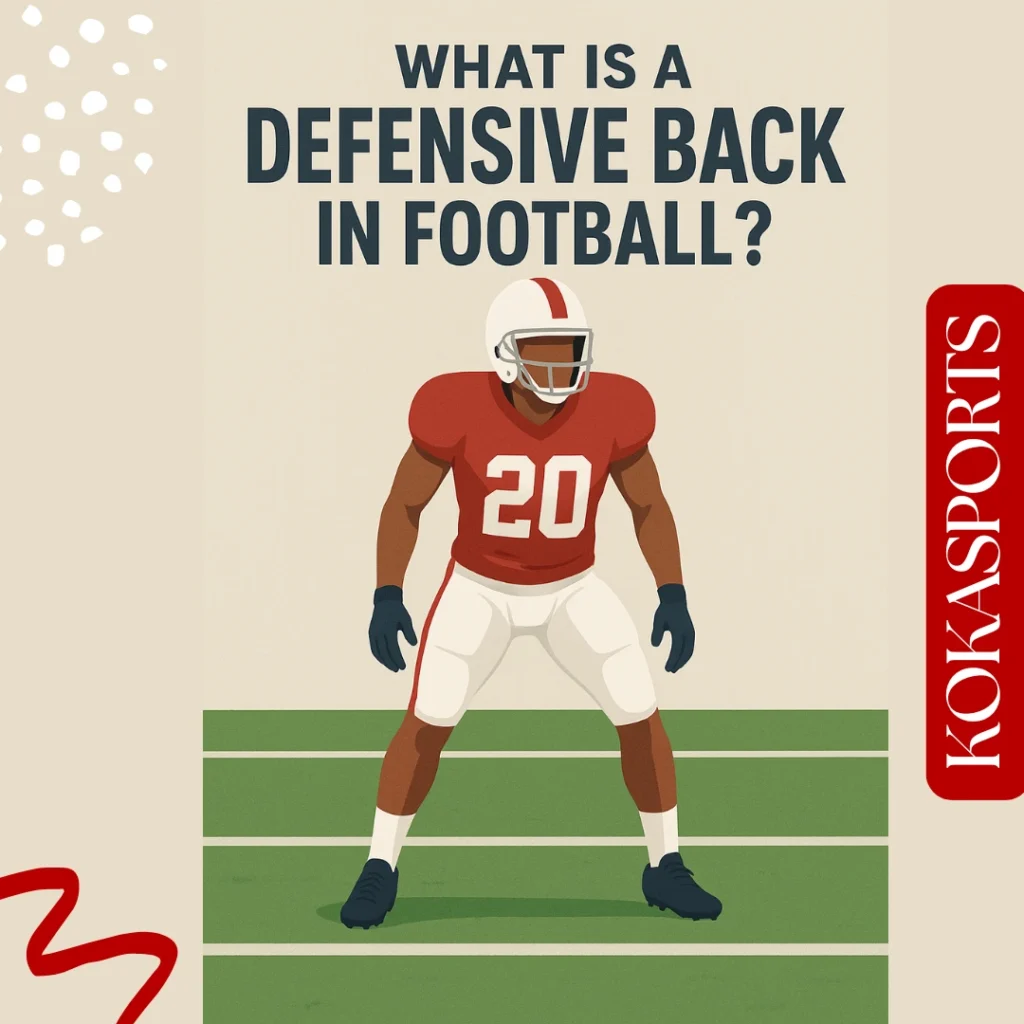
Understanding what is a defensive back in football helps fans appreciate one of the game’s most challenging positions. These defensive players must combine speed, intelligence, and toughness to succeed. From cornerbacks who shadow wide receivers to safeties who patrol the deep middle, each type of defensive back has a crucial role.
Whether you’re watching your local high school team or following professional games, pay attention to how defensive backs work together. Notice how they communicate, support each other, and make the tackles that prevent big plays. The defensive back position requires some of the best athletes in football, and their contributions often determine who wins and loses games.
For young players interested in this position, remember that becoming a great defensive back takes time and dedication. Focus on developing your speed, ball skills, and football intelligence. Study the game, learn from great players, and always work to improve your tackling technique. The defensive back position offers exciting challenges and the chance to make game-changing plays that fans will remember forever.
FAQs
What’s the difference between a linebacker and a defensive back?
Linebackers play closer to the line and stop runs; defensive backs play deeper and cover receivers.
Is a defensive back the same as a safety?
No, safety is one type of defensive back – cornerbacks are the other type.
What’s the hardest position in football?
Quarterback, due to decision-making pressure and offensive leadership responsibilities.
What makes a good defensive back?
Speed, ball skills, tackling ability, and high football IQ.

